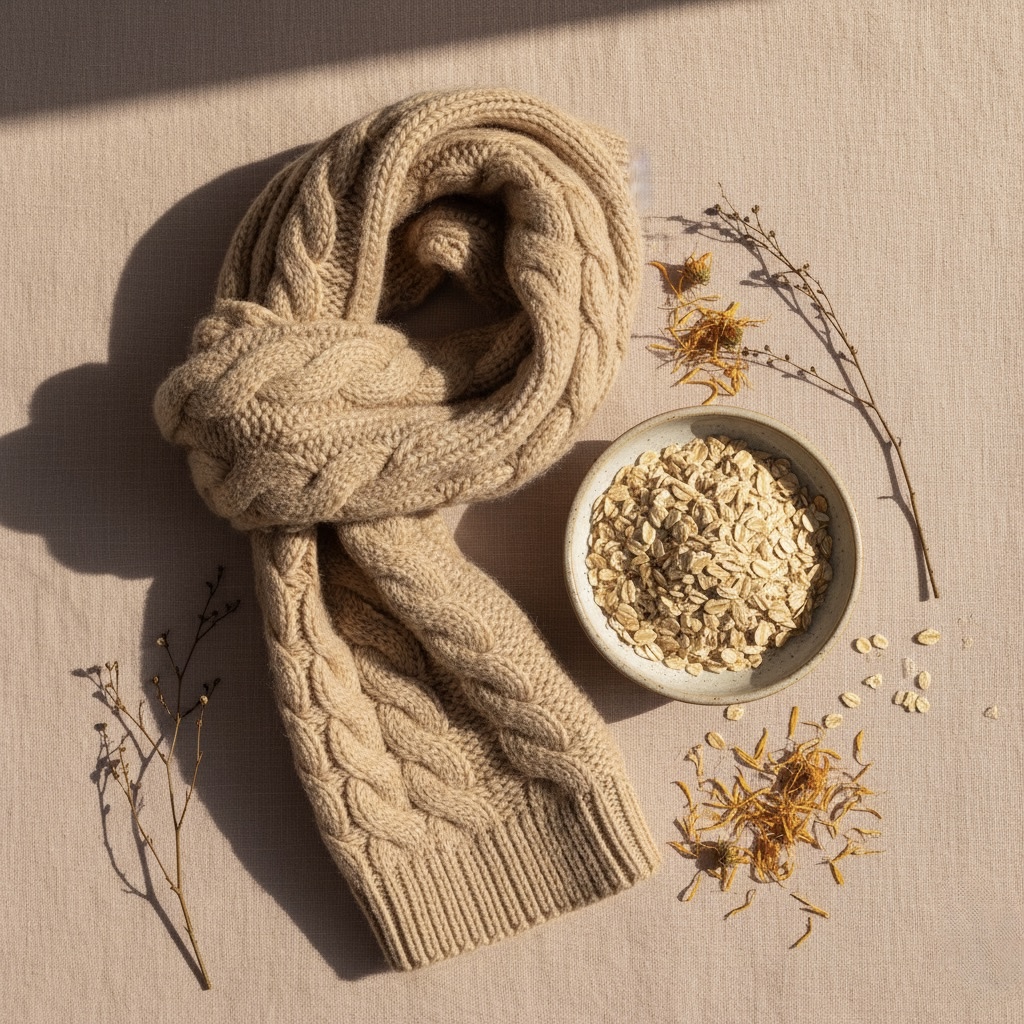Winter Eczema Flare-Ups: Why They Get Worse & How To Stay Calm This Season

The Winter Skin Crash: What’s Really Going On
When cold weather arrives, the environment changes in ways your skin immediately feels.
Winter brings:
• Low humidity
• Colder air outdoors
• Dry heated air indoors
Together, these conditions pull moisture out of your skin faster than your barrier can replace it. This leads to:
• Dryness and tightness
• Fragile, reactive skin
• Micro-cracks in the barrier
• More inflammation and sensitivity
If eczema is already part of your skin story, winter simply amplifies everything.
Why Winter Triggers Eczema Flare-Ups
❄️ Low humidity = rapid moisture loss — Cold air can’t hold much moisture, so it pulls hydration from your skin — dryness → irritation → flare-ups.
🔥 Indoor heating strips hydration too — The warm air circulating in homes and buildings removes surface moisture and weakens barrier lipids.
💨 Wind causes micro-damage — Even brief wind exposure can cause tiny cracks and inflammation in dry skin.
🧤 Heavy fabrics create friction — Wool, fleece, and layered clothing rub against already-sensitive areas, triggering itchiness and irritation.
Winter Isn’t the Only Trigger
Your skin barrier becomes weaker during cold seasons — meaning other everyday triggers hit harder.
Common triggers that can intensify in winter include:
• Stress
• Over-exfoliating
• Harsh or new skincare products
• Hot showers
• Seasonal allergies
• Frequent hand washing
• Synthetic fabrics
• Traveling between different climates
Your baseline sensitivity increases, making skin more reactive than usual.
How to Minimize Winter Flare-Ups
The goal in winter is to strengthen and protect your barrier. These simple shifts can make a huge difference.
🧴 Switch to a thicker moisturizer — Look for occlusives and butters that seal moisture in: shea butter, mango butter, oat oil, evening primrose, ceramides.
💦 Moisturize within 2 minutes of showering — Applying on damp skin traps water before it evaporates — one of the most effective eczema-friendly habits.
🚿 Take shorter, lukewarm showers — Hot water feels good but breaks down your barrier lipids quickly.
🌸 Use fragrance-free formulas during flare-ups — Sensitive or cracked skin can react strongly to even gentle scents.
🌿 Add calming, barrier-supporting ingredients — Great options include colloidal oatmeal, bisabolol, zinc, niacinamide, calendula or chamomile extract.
✈️ Stay hydrated during climate changes — Moving between cold, dry outdoor air and warm indoor air can rapidly dehydrate your skin.
Underrated Winter Habits That Help More Than You Think
🧵 Layer cotton under wool — Even indirect wool contact can irritate eczema-prone skin.
💧 Use a humidifier at night — Heaters decrease humidity dramatically. Adding moisture back into the air helps prevent overnight dryness.
🛏 Change pillowcases more often — Dry skin sheds more frequently — buildup can worsen irritation.
🤧 Watch your indoor allergies — Dust mites and indoor allergens rise in winter, and allergy inflammation can indirectly trigger eczema.
Final Takeaway
Winter flare-ups don’t mean your skin is failing — they’re simply a reaction to colder, drier conditions. With the right routine and consistent hydration, you can keep your barrier stable through the season.
If you prefer gentle, sensitive-skin-friendly formulas, explore more at musesknlab.com.